
Victoria’s Barwon Health will roll out a community health solution using Salesforce’s Health Cloud next year, implemented in partnership with software integrator Mav3rik.
Barwon Health went to tender last year for the new solution, which will replace the legacy The Care Manager (TCM) clinical system and a patient administration system.
The new platform will be used to support the Hospital Admission Risk Program (HARP) and all community health services including community nursing, post-acute care, audiology, dental, diabetes, healthy communities, nutrition and dietetics, palliative care, podiatry and sexual health.
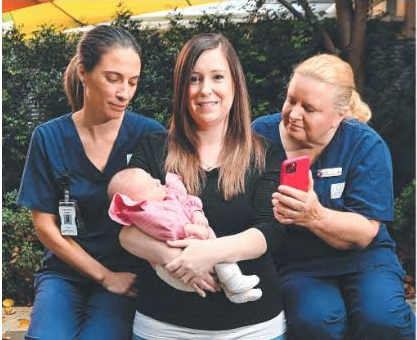
South Australian digital health vendor Personify Care has partnered with the Northern Adelaide Local Health Network (NALHN) to develop digital pathways for antenatal care, using the concept of midwife and obstetrician digital leads to ensure clinical teams can control their workflows.
The Pregnancy Online Platform NALHN (POPN) digital pathways aim to deliver information that is specific to a woman’s stage of pregnancy and automatically captures and screens clinical data-points to support existing clinical workflows.

Northern Health’s Victorian Virtual Emergency Department (VVED) project will this week be equipped with electronic prescription functionality through an integration with cloud health software company MediRecords.
MediRecords will enable VVED doctors to send electronic prescriptions direct to patients or their carers, reducing paperwork and postage and transportation costs, the company says.
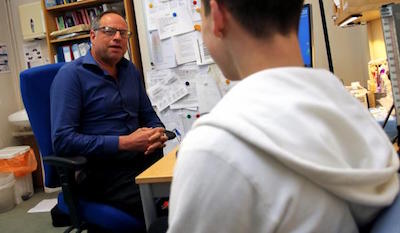
Victoria’s Gippsland Primary Health Network (PHN) is partnering with Latrobe Regional Hospital (LRH) to pilot a project looking at using the hospital’s EMR to improve the quality of discharge summaries sent to patients and GPs.
Gippsland PHN is funding the Gippsland Health Alliance to run the pilot with a focus group of general practitioners. The objective is to design a discharge summary format that is acceptable to GPs and fit for purpose as a tool for handing over a patient’s care from the hospital to their doctor, the PHN says.

ASX-listed medications adherence technology vendor MedAdvisor is set to buy GuildLink, the Pharmacy Guild of Australia’s eHealth arm, setting up a powerful combined player in the community pharmacy digital health sector.
MedAdvisor hopes to raise $A14.6 million to fund the purchase along with funds to accelerate growth in Australia and the major market of the US, and to provide general working capital. The guild will become the major shareholder in MedAdvisor and the current guild president, Anthony Tassone, will be appointed to the board.

Pulse+IT has today launched a new aged, community and disability care edition of its popular eNewsletters, featuring a weekly round-up of the latest health IT and digital health news for the sector in Australia and New Zealand.
Predominantly targeting the residential and in-home aged care sectors, it will also cover the use of information technology in community care, including mental health, and disability care.

Amazon buys primary care provider for $3.9b, what the Amazon deal means for healthcare, Apple’s plans for digital health, AI tool for sepsis, US telehealth fraud, India’s future with ABDM, mHealth wearables, Cerner’s VA EHR and patient safety, Ireland’s lost digital health decade
Amazon makes further healthcare inroads with $3.9B One Medical deal
Healthcare IT News ~ Mike Miliard ~ 21/07/2022
The merger agreement with the IT-driven primary care company aims to make healthcare more "accessible, affordable and even enjoyable" with in-person and virtual care services.

The ongoing saga that is federally funded telehealth policy dominated the start of the week in Australian health IT, but at the end of it, we were hearing some pretty startling news about the direction that eHealth NSW is thinking of taking with its single digital patient record (SDPR) project.
The doctors’ lobby groups managed to get the Department of Health and Aged Care to change its mind on dropping the level C telephone consult item for COVID-19 antivirals, but that is as far as the department seems will to budge at this stage. The combined wrath of the college of GPs, the AMA and even the Royal Australian College of Physicians has been let loose on the department through submissions to the Australian National Audit Office’s (ANAO) recently announced audit of the expansion of telehealth services.

Monash Health is running a trial of a new pharmacist-led virtual clinic to help patients manage their medications.
The Optimising One Medication with Patients (OOMPa) trial will initially target patients with chronic disease in managing their blood pressure, using a Bluetooth-linked blood pressure cuff that can send real-time data back to onsite Monash Health pharmacists.

Ian McCrae, CEO of New Zealand’s largest and most successful health IT business Orion Health, has announced he is retiring next month and will hand over the baton to Fisher & Paykel exec Brad Porter.
Mr McCrae, who is at retirement age and has also been battling health issues, will remain as an executive director of the company he founded 30 years ago.

The WA Primary Health Alliance (WAPHA) has chosen Medibank Health Solutions to run its new Head to Health assessment and referral phone service, providing statewide access to predominantly telephone-based assessment and referral for people with mental health needs.
Head to Health is rolling out Australia-wide through the primary health networks (PHNs) for mental health needs, as well as information and advice about alcohol and other drugs (AOD).

Auckland primary healthcare organisation ProCare has chalked up over a thousand telehealth consultations for high-needs groups through the Ministry of Health’s UnifyHealth digital enablement program since launching last year.
UnifyHealth was rolled out in Auckland in December 2021 to help high-needs patients access healthcare when they are unable to be seen at their local practice.

Melbourne’s Northern Health has been provided with extra funding to roll out its Victorian virtual emergency department (VVED) program to people living in residential aged care facilities and those on the COVID positive pathways program, including supporting access to antiviral treatments.
The extra funding will also go towards doubling the VVED capacity to allow 500 patients per day to access a video consultation with an emergency doctor or nurse from their own home.
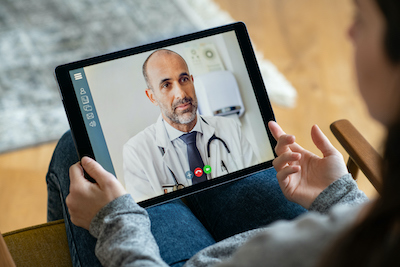
Melbourne-headquartered electronic medical record vendor Global Health has added Yarram District Health Service in Gippsland to its growing list of regional community health providers that have adopted its MasterCare solutions.
Yarram will implement the MasterCare EMR along with Global Health’s dashboards as a service (DaaS), ReferralNet secure messaging platform and Hothealth patient engagement platform solutions in the health organisation’s hospital and community health services.

ASX-listed medical imaging and data management solutions vendor Mach7 Technologies has teamed up with cloud-native picture archiving solution (PACS) vendor AdvaHealth Solutions to offer an interoperable PACS and vendor-neutral diagnostic viewing platform package to healthcare organisations in the ANZ region.
The two companies hope to offer a best-of-breed solution for medical imaging through AdvaHealth’s cloud-native AdvaPACS along with Mach7’s eUnity “zero-footprint” enterprise diagnostic viewer.

The federal government will allow GPs to claim long telephone consultations for Covid-19 antiviral prescribing but only temporarily, signalling it is unlikely to budge from its decision to remove MBS items for phone consults lasting longer than 20 minutes.
Minister for Health and Aged Care Mark Butler announced on the weekend that temporary MBS items would be made available to cover a longer consultation by phone to ensure antivirals are safely prescribed by doctors and that patients start taking them within five days of symptoms.

No consensus on digital hospitals, evidence lacking for digital health products, racial biases in pulse oximeters, real-time prescription pricing data, vulnerability in Microsoft Teams, interoperability and user-centred design, Kenya’s universal patient portal, AI for extubation, Citadel’s lab software for NHS Scotland
The UK wants to build ‘digital hospitals’. But what does that mean?
TechMonitor ~ Sophia Waterfield ~ 13/07/2022
New hospitals must be 'digital' to secure funding but there is no consensus on what a 'digital hospital' really is.
In digital health space, many companies sidestep rigorous study
Managed Healthcare Executive ~ Jared Kaltwasser ~ 15/07/2022
The report highlights the gap between rigorously tested prescription digital therapeutics and products that make health or economic claims without providing supportive evidence.
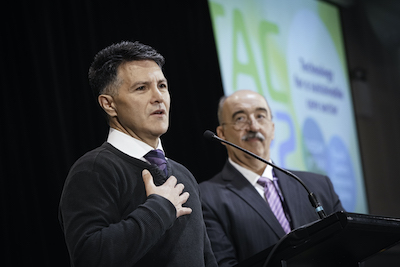
It was a pretty good turnout at Sydney’s Rosehill Gardens Racecourse this week for the annual ITAC conference, which was heavy on policy discussions surrounding the release of the Royal Commission into Aged Care Quality and Safety’s final report last year and the election of a new federal government this year that has made aged care reform one of its highest priorities.
That description would normally put the fear of god into the average punter but this year, something was different. Information technology in aged care is often one of the forgotten topics in the wider health IT and digital health sector, but in Australia at least, never has it been more important. And in our opinion, never before has there been such confidence that progress will actually be made in leveraging IT to assist in the fundamental reform of the aged care system.

Te Whata Ora Waikato (formerly the Waikato District Health Board) will roll out the Provation iPro anaesthesia information management system (AIMS) from Altera Digital Health at Waikato and Thames hospitals, replacing paper-based systems at both.
Altera Digital Health, which was recently established from the sale of Allscripts’ hospital and large physician practices business segments to Harris Computer, will deliver the full suite of the Provation iPro anaesthesia information management system (AIMS).

The Central Adelaide Local Health Network (CALHN) has launched a new program aimed at enhancing the post-operative recovery of surgical patients through pre-operative digital pathways.
Dubbed the My PreHab program, the surgical ‘prehabilitation’ system uses digital patient pathways from SA-based digital health vendor Personify Care to guide referred patients to self-screen for manageable risk factors and take simple steps to optimise their health before surgery, in collaboration with their GPs.
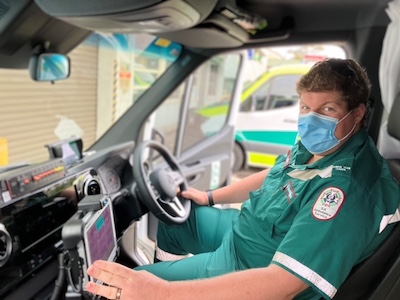
SA Ambulance Service (SAAS) is rolling out the latest in-vehicle technology for receiving critical information when responding to emergencies following a $1.2 million investment in more than 300 new mobile data terminals (MDTs).
The fleet of Panasonic tablets is being supplied and supported by Advanced Mobile IT (AMIT) and will replace the existing devices used by the ambulance service.

The Australasian Institute of Digital Health (AIDH) has joined forces with eHealth NSW to co-host the Digital Health Summit in Sydney in October.
AIDH CEO Louise Schaper said the institute had worked closely with eHealth NSW for many years.

The Department of Health and Aged Care will begin a series of consultations from August on an aged care data strategy that will develop an overarching vision for the digital future of aged care and inform sector-wide digital investments to 2030.
The department is also progressing work on a national minimum data set and an aged care data asset, working with the Australian Institute of Health and Welfare to deliver on data-related recommendations of the Royal Commission.
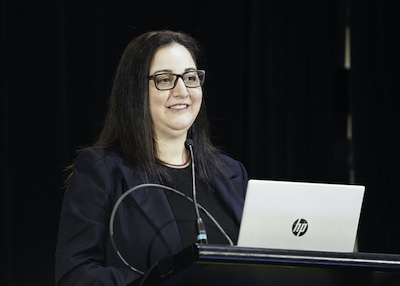
The Australian Department of Health and Aged Care (DoHAC) is planning to improve the platforms it uses for client and aged care provider management with two new Salesforce-based systems as part of its digital transformation program.
It is also building a new business-to-government gateway to complement the one the Australian Digital Health Agency is developing for the My Health Record, and will replace the current National Approved Provider System (NAPS) identifier that DoHAC and Services Australia use for providers in relation to aged care.
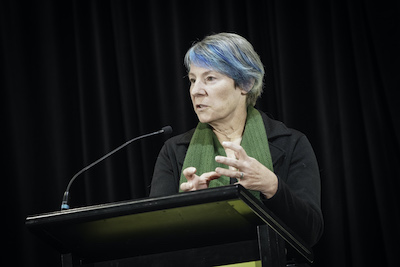
The University of Melbourne’s Centre for Digital Transformation of Health has launched the first part of its validitron project, going live with a digital sandbox to help design workflows for the new models of care that IT systems enable.
Next week, the second part of the project – the Melbourne Connect Sim Lab – will officially be launched, offering an immersive, physical simulation laboratory to allow developers to test out those workflows using their technologies.
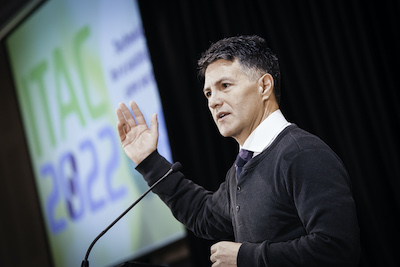
The NSW government is building a new patient app that will initially provide information in real time on emergency department waiting times and availability of hospital car parking, with further plans to become a booking platform for outpatient services and to provide access to the patient’s health data.
There are also plans to build an eReferral hub to act as an electronic dashboard for referrals and allow consumers to view and be notified of their outpatient appointments.

Aged care software vendor group the Aged Care Technology Consortium has released a survey showing there is still a reliance on paper records for care management in residential aged care facilities.
While more than half of facilities surveyed use digital medication management system and almost a third use a pain management platform, one in 10 report that they only use a paper-based care management system.

Health insurer Medibank has partnered with medical centre group Myhealth and telehealth provider Medinet to pilot a new telepsychology service to try to reduce waiting times for psychology consults.
Medibank, which is an investor in the Myhealth Medical Group and announced an investment in Medinet in March, hopes to give people greater access, choice and control when it comes to mental health care.

Victorian Healthcare Association CEO Tom Symondson has been appointed the inaugural chief executive of the new Aged & Community Care Providers Association (ACCPA).
ACCPA officially launched on July 1, bringing together former peak bodies Aged & Community Services Australia (ACSA) and Leading Age Services Australia (LASA).
Mr Symondson will take over from ACSA CEO Paul Sadler, who acted as the interim CEO while the organisation became established. He will begin in the role in September. Mr Sadler will continue as acting CEO until then.

Former Theranos exec Sunny Balwani convicted, Watson Health reborn as Merative, US patients drop telehealth, Google to delete location history for abortion clinic visits, North Korean attackers use Maui ransomware to encrypt servers responsible for healthcare services, Apple Watch infringed AliveCor's ECG patent
Former Theranos exec Sunny Balwani convicted of 12 counts of fraud
The Guardian ~ Kari Paul ~ 08/07/2022
The decision by California jurors brings to close a 13-week trial of Elizabeth Holmes’s former lover and business partner.

The big news this week came out of the west, where WA Health has finally gone to tender for a new electronic referral solution to replace the SharePoint system it has used for many years. WA Health has a centralised referrals processing system for its metropolitan hospitals and SharePoint would have done the job in the past, but newer technology has fast overtaken it.
WA Health says just over a quarter of referrals to its public hospitals are done by secure messaging and it appears faxes and letters rein supreme otherwise. It would be a surprise if the situation is any different between GPs and private specialists. There’s a lot of easily available, cheap and very good secure messaging technology out there, so it appears that the referrals management system (RMS) will be central to this project. WA Health is looking for a new RMS that also has to integrate with webPAS and its internal eReferrals system. That’s where a lot of the complexity of eReferrals comes to the fore.

Researchers from the CSIRO have harnessed Amazon Web Services’ RONIN research computing platform to develop a faster way to identify emerging new COVID-19 variants.
The tool, known as VariantSpark, is able to analyse the DNA of the whole variant, rather than the current method of monitoring changes to the spike protein.

Melbourne’s Alfred Health will upgrade to PowerHealth Solutions’ latest version of its web-based clinical costing solution PowerPerformance Manager.
Adelaide-headquartered PowerHealth, now part of Telstra Health, specialises in activity-based costing, hospital billing, DRG grouping, budgeting and patient safety solutions for healthcare organisations.

Residential aged care provider McKenzie Aged Care has rolled out Cisco’s Webex platform to add cloud-based video conferencing to its existing Cisco voice telephony system to support staff communication.
McKenzie, which operates 17 residential aged care facilities in Queensland, NSW and Victoria, wanted to use the investment in the telephony system to roll out a unified communications platform, McKenzie Aged Care general manager for information and communications technology Peter Corrigan said.
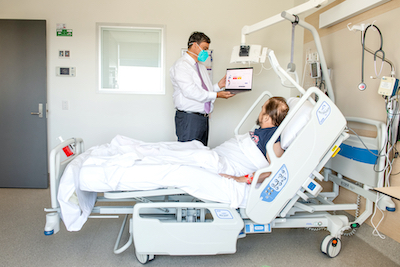
Melbourne medical device vendor Lenexa Medical has appointed a new distributor to roll out at least 1000 units of its LenexaCare pressure injury prevention technology in hospitals and aged care facilities over the next three years.
LenexaCARE is a pressure injury management system that assists clinicians and carers by providing targeted real-time monitoring for patient position, enabling personalised pressure injury prevention.
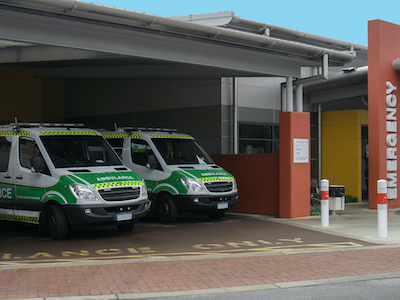
The ANZ arm of international healthcare software solutions provider Dedalus is eyeing off the ambulance and emergency hospital admissions market in Australia and New Zealand with a new product suite from Danish firm Amphi Systems.
Amphi Systems’ amPHI suite is described as a complete electronic pre-hospital care record (ePCR) solution unifying communication across ambulances and paramedic vehicles, the dispatch centre, and the emergency department.

WA Health is planning to replace its Microsoft SharePoint solution for handling external referrals into its public hospitals with a new solution it is calling Smart Referrals WA (SRWA), which will see general practices, private specialists referring into public outpatient services and Aboriginal Medical Services use a contemporary, automated system.
Referrals to metropolitan WA public hospitals are currently processed by the Central Referral Service (CRS), staffed by nurses and clerical staff. According to WA Health, while electronic referral forms are available through GP practice management systems, only about 26 per cent are sent via secure messaging.
About 50 per cent of referrals submitted to CRS also require remedial action due to missing information, faxed referrals missing pages, referrals not meeting required criteria and even illegible handwriting, WA Health says.


Ireland’s long road toward electronic health records, Quebec to invest $1 billion in health IT, internet searches for abortion meds jump, UK to allocate £2 billion to roll out of electronic patient records, period tracking apps go anonymous after Roe decision, changes to patient data due to Roe
Delay in rolling out electronic health records an ‘enormous missed opportunity’
Irish Times ~ Sylvia Thompson ~ 25/06/2022
Ireland is the fourth last country in Europe to embrace the widespread introduction of electronic health records (EHRs) for patients, according to Prof Martin Curley, professor of innovation at Maynooth University, who was appointed head of digital transformation and innovation at the Health Service Executive in 2019.
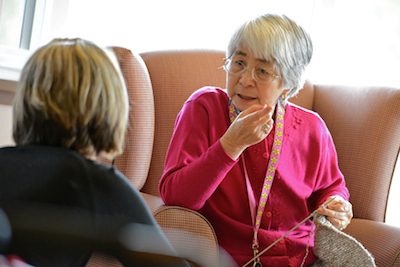
To coin a phrase, time does move quite slowly in the aged care sector, but in the last decade in Australia at least, recognition that aged care has been severely ignored to the point of criminal neglect has finally filtered through. The Royal Commission into Aged Care Quality and Safety, driven by some seriously good journalism from the ABC along with the long-term efforts of whistleblowers, has revealed what can only be described as an abject state of affairs in the residential aged care sector in Australia. And who knows what goes on it community aged and disability care.
Thankfully, the Royal Commission has been proved to have been a massive wake-up call and all sides of politics have committed to trying to fix the problem. It will be increasingly difficult as workers desert the industry due to low pay and over work, and that is something everyone really needs to come to grips with. Even with a newly elected government promising 24/7 registered nurses, an increase in weekly minutes spent on direct care per resident and more money spent on better food, the problems aren’t going to go away soon.

2022 represents a pivotal year in IT for aged care as the recommendations of the Royal Commission into Aged Care Quality and Safety come to fruition, federal funds finally flow for investment in IT systems to improve care provision in residential aged care, and a new government elected with promises to save the sector through massive increases in the workforce.
There has also been real progress in terms of standardisation of aged care data requirements and software solutions through the Australian Digital Health Agency, the Digital Health CRC and the Aged Care Industry IT Council (ACIITC), and a new emphasis on digitising the sector from the Department of Health.

The Australian Department of Health will not extend COVID-19 MBS subsidies for long telephone consultations beyond this Friday, despite intense lobbying from the Australian Medical Association and Royal Australian College of General Practitioners.
The doctors’ groups have urged the new government to extend the existing MBS-funded telehealth rules beyond their expiry date of June 30, asking that the current arrangements continue to December 31 just like other COVID-19 measures.

Kylie Woolcock has been named as the permanent CEO of the Australian Healthcare and Hospitals Association (AHHA), taking over from long-term executive Alison Verhoeven.
Ms Woolcock has been acting CEO for the last six months, but has held a senior position as policy director of the association for six years.

eHealth NSW has officially gone live with its Engage Outpatients electronic referral program, which will see HealthLink’s SmartForms technology and its referral management system (RMS) piloted throughout the state.
Engage Outpatients was officially launched at Royal Prince Alfred Hospital earlier this month but has been available in several primary health networks since last year, having been trialled by general practices in the NSW Northern Rivers region in association with Lismore Base Hospital.

ASX-listed New Zealand firm Volpara Health is collaborating with Microsoft on a new R&D project looking at using Volpara’s mammogram software to potentially identify cardiovascular issues.
Volpara recently won a patent for its breast arterial calcifications (BACs) technology. BACs are often observed through screening mammography but while they are not thought to be allied to increased breast cancer risk, they may be indicative of arteriosclerosis.

Australia’s Department of Health is hoping to fast track the adoption of the electronic version of the national residential medication chart (eNRMC) by residential aged care facilities through a paid transitional program before fully conformant software rolls out.
The national residential medication chart was first developed in 2014 as a paper chart that includes each resident’s details, including their photograph and known adverse drug reactions, to enable correct identification when prescribing, supplying and administering medicines.

Western Australia’s Child and Adolescent Health Service (CAHS) hopes to procure a patient engagement app that will be trialled for patients with type 1 diabetes.
CAHS is looking to pilot an app that can provide interactive data display and monitoring, automated messaging, sharing of tailored educational information, personalised learning pathways and bidirectional secure communication.
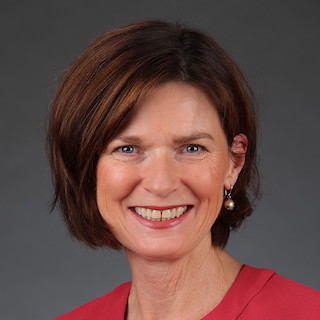
Former Minister for Agriculture and Regional Development Mary-Anne Thomas has been sworn in as Victoria’s new Minister for Health and Minister for Ambulance Services.
She takes over from Martin Foley, who took over the role following the resignation of predecessor Jenny Mikakos and led the health sector through much of the pandemic.

Facebook sued over health data scraping, FHIR harnessed by Sync for Genes, “clinical satnav” for doctors, smartphone-based tympanometry, US company to buy UK’s EMIS, Epic signs on to TEFCA, healthcare cybersecurity, health data and Roe v Wade
Meta sued for violating patient privacy, scraping health data from hospitals
Health IT Security ~ Jill McKeon ~ 22/06/2022
Meta allegedly scraped health data from hundreds of hospital websites using its Meta Pixel tracker, sparking patient privacy concerns and a lawsuit.

The dictionary definition of a saga is an Icelandic epic narrative, a long and complicated story in which famous families do this and that over a long period of time and there is a major element of heroic exploits. The common definition is of a long and complicated story to which there seems no end. The former sounds great; the latter sounds like health IT policy in Australia.
As a new federal government settles in in Canberra and a couple of state governments begin their respective roads to re-election with big-spending budgets and ministerial reshuffles, longstanding healthcare horrors lurk in the background, ready to trip up any new administration. For the feds, it is the deep trough of health and aged care funding, along with our old friend “permanent” telehealth. For the states, the funding trough is allied to a history of administrative bungling and an inability of the health sector as a whole to get with the times.
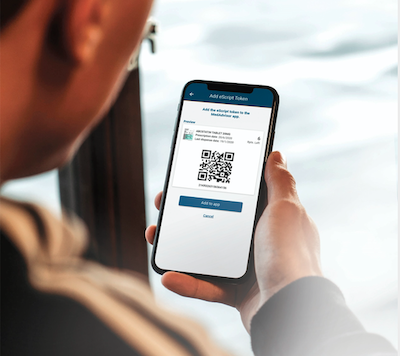
ASX-listed medication adherence app vendor MedAdvisor is moving its executive functions to the US, with former Surescripts CEO Rick Ratliff taking over as CEO and managing director from Australian-based Rob Read.
The company began as a start-up in 2014 under founder Josh Swinnerton and has since become the dominant market player in medications apps in Australia, with almost 60 per cent of pharmacies able to accept orders and send alerts through the app.

New Zealand’s largest health software vendor Orion Health has announced new appointments to its executive team as it signals the departure of founder and CEO Ian McCrae following 30 years in the industry.
In a statement, a spokesperson for Orion Health said: “After thirty years of leadership and following treatment for a brain tumour, Ian McCrae is adjusting his role to deliver the company’s people plan and leadership transition as the last phase of his five-year rebuild strategy.”

The Australian Medical Association is calling on the new government to extend the existing MBS-funded telehealth rules beyond their expiry date of June 30, asking that the current arrangements continue to December 31 just like other COVID-19 measures.
The former Coalition government had planned to cut certain MBS items for telehealth, including some for long phone consultations and some non-GP specialist items, from July 1.

A new project to develop an artificial intelligence-powered cloud platform to provide digital support for genetic disorders has launched today, initially focusing on familial cancers and cardiac conditions.
The two-year program is being led by the Peter MacCallum Cancer Centre and Swinburne University of Technology and is part of a Digital Health Cooperative Research Centre project aimed at improving care for patients living with genetic disorders.

The statewide roll-out of the Cerner integrated electronic medical record (ieMR) has been given a boost in today’s Queensland state budget, with $240 million promised over the next four years in additional funding and an extra $60m contingency for year five.
The ieMR roll-out was paused in 2019 in order to optimise the existing digital hospital stack just as it was set to be implemented at Queensland’s largest health service, Metro North Hospital and Health Service (HHS).

The NSW government will spend an extra $4.5 billion this year on workforce measures to try to ease pressure on existing health workers and recruit new staff, along with a $3000 bonus for NSW Health employees in recognition of their work on the frontline of the COVID-19 pandemic.
New initiatives for digital health in the budget include $94.5 million over four years to provide in-house secondary triage and alternative referral services within a new Ambulance Virtual Clinical Coordination Centre, and $57.2 million to develop a clinical interface for the Digital Baby Book, delivered under a intra-departmental Brighter Beginnings package for early childhood development.

Services Australia has agreed to a grace period up to the end of August for practices using Best Practice Premier that have not yet upgraded to the new Medicare web services-enabled version.
The grace period also applies to users of MedicalDirector Clinical, Pracsoft and Bluechip who have not yet upgraded to the new Medicare web services-enabled version. The process for Helix users was automatic.

Melbourne’s Monash Health will no longer accept faxed referrals to its specialist consulting services after July 18 following a two-year project to swap over to electronic referrals for GPs and other private specialists.
Monash Health has made all of its specialist consulting services available by eReferral using HealthLink’s SmartForms technology, which allows users of Best Practice, MedicalDirector, Genie and Medtech Evolution to write and send a referral within their clinical information system using pre-populated forms.

Oracle’s big plans for national database after $28b Cerner purchase, Millennium EMR to be modernised, SMS for vaccine patient outreach, Palantir eyes off NHS contract, massive attack on Eye Care Leaders, ResMed buys another software company, monitoring Parkinson’s on Apple Watch, Mayo Clinic Platform and AI, health data strategy for England
Health IT execs skeptical of Oracle's lofty vision to build national medical records system
FierceHealthcare ~ Heather Landi ~ 14/06/2022
Ellison's announcement last week, on the heels of its $28 billion deal to pick up the electronic health record company, was met by a healthy dose of skepticism by interoperability experts who have been striving for years to build technical "roadways" to make it easier to access and share health data.
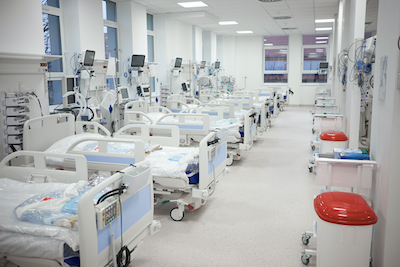
Probably the biggest story in health IT this year and so far this decade has been Oracle’s enormous outlay in buying the world’s largest EMR vendor, Cerner, for 28 billion dollarydoos. Exactly what Oracle hopes to achieve with the acquisition has been a bit of a mystery, beyond the fact that Cerner is a very profitable company, with revenues of $US5.5 billion a year and net earnings of about half a billion.
Cerner also has a huge amount of future earnings on its books, with the enormous US Veterans Affairs EHR project, worth eleventy billion dollars, still rolling out and a footprint in most developed countries that far outstrips its nearest rival in Epic. But beyond the obvious financial benefits, what if anything Oracle hopes to achieve with the purchase has so far remained unclear.
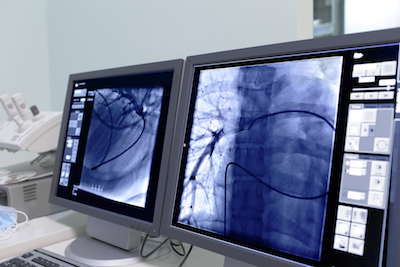
The Royal Australian and New Zealand College of Radiologists (RANZCR) and the Australian Diagnostic Imaging Association (ADIA) have released a SNOMED-based radiology referral set (RRS) aimed at enhancing interoperability and data accuracy between referrers and radiology providers.
The RRS is described as a set of SNOMED CT-AU terminologies that can be used in the background of referrers’ software systems, providing greatly enhanced interoperability and data accuracy between referrers and radiology providers.

St Vincent’s Hospital Sydney (SVHS) has signed an agreement with the Sydney Neuroimaging Analysis Centre (SNAC) to focus on the development and deployment of novel artificial intelligence-based solutions.
SNAC, based in Camperdown, is a medical imaging analysis and research enterprise that integrates clinical imaging and neurosciences with engineering research.
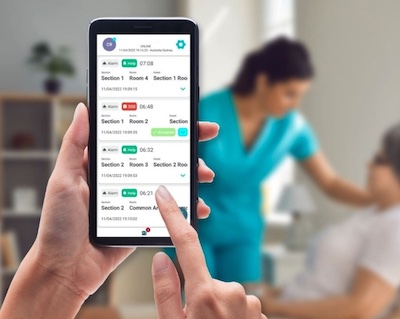
Nurse call system vendor Vitalcare has launched a new app called Nightingale for Android devices, aimed at task allocation and workflow optimisation in healthcare facilities.
The app is aimed at enhancing workflow allocation within facilities, enabling task allocation, escalation and people management.

Technology such as text services and smart inhalers that link to apps can halve the risk of asthma attacks, new research shows.
A study published in the Cochrane Review has found that patients who used digital technologies had much better asthma control and half the risk of asthma attacks as those that did not.
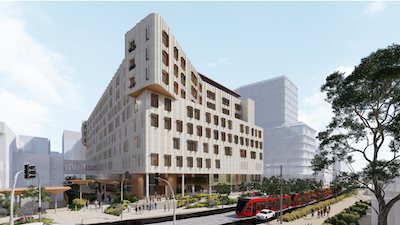
The redevelopment of Sydney Children's Hospital at Randwick will include a new paediatric virtual care centre and hospital command centre, building on the Sydney Children’s Hospitals Network’s (SCHN) virtualKIDS virtual care program.
VirtualKIDS is currently operating from the Children’s Hospital at Westmead (CHW) but a new centre will also be built at Randwick as part of its stage 1 redevelopment, which will also include Australia’s first Children's Comprehensive Cancer Centre.

Oracle’s plans for Cerner, primary care IT market in NHS, doctors don’t like patient scheduling, Teladoc lawsuit, Babylon Health financial losses, why AWS leads Google and Microsoft in health cloud, 2m records breached in US radiology hack, Apple’s meds tracking app, medical device cybersecurity, GE and Medtronic team up
Hot off its Cerner acquisition, Oracle is developing a national health records database
MedCity News ~ Katie Adams ~ 09/06/2022
Two days after it completed its $28.4 billion acquisition of Cerner, Oracle announced plans to build a national, anonymized health information management system.
Tech Innovation Framework for primary care launched by NHS Digital
Digital Health News ~ Jordan Sollof ~ 08/06/2022
NHS Digital has launched a new framework which has been designed to increase innovation and choice across the primary care IT market.

We here at Pulse+IT like to keep an eye on not just industry media coverage of health IT but mainstream media coverage too, and this week provided quite a few morsels. The Guardian ran one of its regular stories on the My Health Record last week and while we think it got it right in terms of balance – it reported those who were for, those who were against and those who were in between – nothing new was revealed, to be honest.
The MyHR/PCEHR was launched almost 10 years ago (not 12) and it has cost upwards of $2.6 billion (not less) but otherwise the main thrust of The Guardian’s story is on the money. The system simply isn’t being used, not that this is news to anyone. The RACGP’s in-house PR unit newsGP was touting a spike in use in January, due to people looking at their COVID vax record and PCR results, but the figures pretty much returned to normal after that. Yes, you can see your vax records and test results on a nice little dashboard in My Health Record, but you can also get them elsewhere. The big use case for patients simply isn’t being met by the system.

Experience research and consulting firm Insync is running a research project to assess the patient experience of telehealth services in medical practices.
Patients will be asked to provide feedback about their interactions with practices, clinicians, the telehealth process and technology, and to provide insights into what improvement are required to for future telehealth services.

A number of primary health networks (PHNs) will commence moving over to the primary population health management and clinical audit tool Primary Sense from next month, replacing the Pen Cat Plus tool for primary care data collected for federal reporting purposes.
Gold Coast Primary Health Network (GCPHN) will begin the move from July 1, and it is expected that many of the other 31 PHNs will follow for PIP QI purposes.

Harris Computer has made another significant purchase in the maternity software market with the acquisition of Victorian-headquartered Management Consultants and Technology Services (MCATS), which markets the Birthing Outcomes System (BOS) to maternity hospitals primarily in Victoria and the ACT.
Canadian firm Harris, part of the Toronto Stock Exchange-listed Constellation Software company, also owns Sydney-based obstetric and maternity software developer Meridian Health Informatics, which supplies NSW Health, Queensland Health, the Tasmanian Department of Health and Mater Health; and the UK’s K2 Medical Systems, which supplies maternity ward software solutions to Mater, Monash Health, Healthscope, Gold Coast University Hospital and RPA Women and Babies/Canterbury Hospital.

A new digital and telephone service that provides ongoing mental health support for people with complex mental health issues is being rolled out across five primary health networks (PHNs), allowing access to a digital participant portal through a health professional referral or self-referral.
The guided service has been developed and delivered by national complex mental health organisation SANE and is will be initially available in the regions covered by the Capital Health Network in the ACT, the Central Queensland, Wide Bay and Sunshine Coast PHN, Central and Eastern Sydney PHN, and the Brisbane North and North Western Melbourne PHNs.
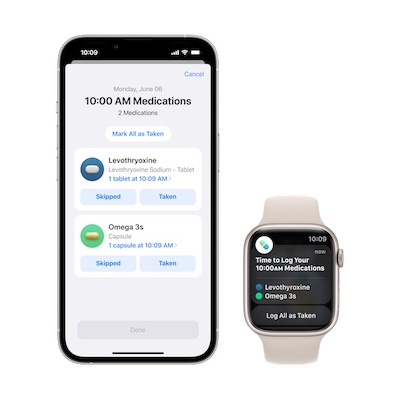
Apple will add a new medications tracking app to the iPhone and Apple Watch, allowing users to set up a medications list by scanning a label to import information or searching through a list of medicines.
Users can then create custom schedules for each medication and set up reminders through the Health app to keep them on track.

A randomised controlled trial of a brief, self-guided app called LifeBuoy showed improvements in suicidal ideation in young adults aged between 18 and 25, showing smartphone apps may prove to be appropriate models of care for young people.
The trial, carried out by researchers from the Black Dog Institute, aimed to see whether smartphone interventions can help to effectively reduce the severity of suicidal ideation among young people experiencing suicide distress.

Melbourne’s Northern Health is in the market for a new radiology information system (RIS) and picture archiving and communication system (PACS) for Northern Imaging Victoria, a newly established public department due to open in October 2023.
It is looking for suppliers to provide fully functioning and implemented RIS and PACS that are integrated with Northern Health systems, including the Cerner electronic medical record, the Dedalus iPM patient administration system and the Infomedix Clinical Patient Folder scanning system.

Diagnostic imaging giant Fujifilm Australia will distribute Sydney firm annalise.ai’s CXR Edge software solution, an artificial intelligence-based clinical decision support solution for mobile and fixed X-ray machines.
Annalise CXR Edge is a software as medical device designed for portable and stationary X-ray machines, intended to assist point-of-care clinicians and radiologists with the interpretation of chest X-rays.
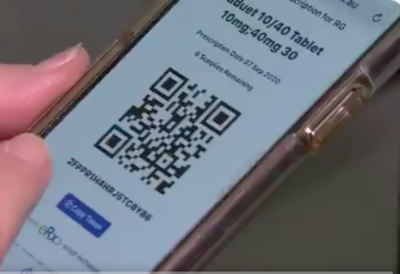
The Australian Department of Health has extended its SMS subsidy for electronic prescriptions for a further three months to the end of September.
It has also expanded an exemption to the telehealth existing relationship rule for patients in flood-affected areas to any areas declared as natural disasters.

Oracle’s $28b purchase of Cerner, OpenEHR and FHIR, Estonia’s ePrescription system, hackers in failed attack on children’s hospital, faulty pulse oximetry readings and ethnicity, variations in LOINC code adoption, app over meds for insomnia, FDA’s medical device security rules
Oracle gains antitrust approvals for $28b purchase of EHR vendor Cerner
EHR Intelligence ~ Hannah Nelson ~ 02/06/2022
Oracle’s Autonomous Database will modernize Cerner’s systems and move them to Oracle’s next-generation cloud, according to Mike Sicilia, Oracle executive vice president of industries.
Interoperability with open standards: let’s kindle a discussion about FHIR
Digital Health News ~ Vivek Krishnan ~ 01/06/2022
There’s no doubt that OpenEHR and FHIR will both have a role to play, however, the UK seems to be focusing on OpenEHR – when FHIR has a lot to offer trusts and suppliers.
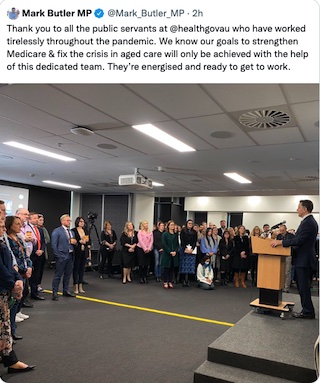
A new era in Australia’s health and aged care sector got off to a big start this week, with a new government elected, a new set of ministers announced, and a new name for the Department of Health (see below) revealed to a thrilled audience (see tweet).
Mark Butler has taken on the big job of Minister for Health and Aged Care, and with both sectors in crisis, it will be a massive task. He has an assistant in new minister for aged care Anika Wells and three junior ministers in Ged Kearney and Emma McBride – both of whom have clinical experience – and Malarndirri McCarthy, who has a great deal of experience in Indigenous policy.
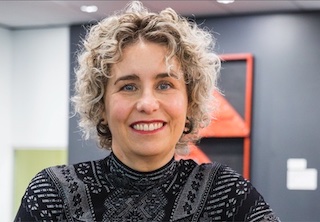
The chief executive of Te Aho o Te Kahu, Cancer Control Agency, Diana Sarfati, will act as the director-general of health and CEO of the Ministry of Health from July 30, when Ashley Bloomfield officially leaves the role.
Dr Sarfati is a public health physician, cancer epidemiologist and health services researcher in cancer control strategy and research.

Northern Health has received funding from the Victorian government to roll out its virtual emergency department initiative statewide.
The expanded Victorian Virtual Emergency Department (VVED) is part of a $21 million investment and aims to ease emergency department pressures throughout the state. It uses technology including Healthdirect's Video Call system and a patient registration and intake platform from NZ firm The Clinician.

ASX-listed electronic medical record vendor Global Health will roll out EMR and patient administration system (PAS) solutions at three more private hospitals, extending its reach into the small hospital market.
The solutions include its MasterCare PAS, inpatient EMR, discharge summary, cloud hosting and digital engagement platforms at Arcadia Pittwater and Matilda Nepean private hospitals in Sydney and Waikiki Private Hospital in WA.

New and expectant mothers in Victoria will be some of the first supported by the free deployment of the iCOPE digital platform to identify women at risk of perinatal depression and anxiety.
The iCOPE app, developed by the not-for-profit Centre of Perinatal Excellence (COPE) following work by BeyondBlue, is federally funded and will be provided to every hospital, GP, obstetrician and maternal and child health service across Australia.

The Returned & Services League of Australia (RSL) has partnered with veteran-owned technology provider Servulink to support a pilot program using technology to connect veterans and their families to services and support in their area.
The pilot will see the deployment of Servulink’s web and app-based Catalogue of Services technology later this year to try to simplify the process of navigating fragmented support services available to veterans in Australia.
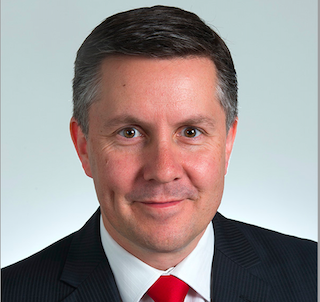
Mark Butler has been named as minister for health and aged care in Anthony Albanese’s new cabinet.
Mr Butler was shadow spokesperson for health for 18 months preceding the election, but has served as a parliamentary secretary for health and a minister for mental health and aged care in previous Labor governments.

Last week, the Tasmanian Department of Health released its Digital Health Transformation – Improving Patient Outcomes 2022-2032 strategy, which outlines the state’s proposals for a digital health roadmap for the Tasmanian Health Service (THS) over the next decade.
Tasmanian physician, health informatician and former president of the Australian College of Health Informatics (ACHI), Terry Hannan, provides his analysis of the strategy, based on 17 years’ experience working in the system and experiences with national and international eHealth projects since 1984.

Healthcare technology distributor Wavelink has signed an agreement with digital identity specialist Imprivata to offer its mobile device access system as part of Wavelink’s Connected Health portfolio in Australia and New Zealand.
Imprivata’s mobile device access system enables secure authentication for accessing patient information on mobile devices, including those from leading manufacturers such as Welch Allyn and Capsule Tech. The aim is to replace manual entry of usernames and passwords on medical devices that require user authentication with fast log-in through the tap of an Imprivata badge.
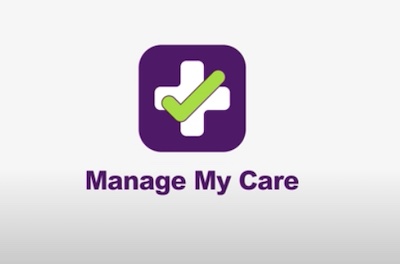
Western Australia has rolled out its Manage My Care app to the state’s largest health services to help patients schedule outpatients appointments and keep track of specialist referrals, following a pilot in 2020 and a gradual roll out over the last few years.
The app has been developed by NEXA Group and is integrated with WA Health’s WebPAS statewide patient administration system, allowing public patients to access their healthcare history.

The SafeScript NSW real-time prescription monitoring system is now available to prescribers and pharmacists across the state, following the first phase of its roll-out late last year in the Hunter New England and Central Coast regions.
SafeScript NSW, built by Fred IT based on its SafeScript Victoria system, has been live at the Northern Sydney, Nepean Blue Mountains, South Western Sydney and Central and Eastern Sydney PHNs this year and is now available across the state.

Integrated record for Northern Ireland, EMRAM baseline for NHS trusts, pharmacies blacklist telehealth firms for controlled substances, virtual care solution for insured patients, revenge attacks by hacking health, virtual wards for heart surgery patients, Epic up to the AWS cloud, 500-bed virtual ward in Manchester, can Ireland introduce an EHR?
Northern Ireland to implement fully integrated electronic health and care record
Healthcare IT News ~ Tammy Lovell ~ 26/05/2022
The digital transformation programme will connect acute physical, mental health, community care and social services.
Virtual wards for heart surgery patients to be rolled across London
Digital Health News ~ Cora Lydon ~ 25/05/2022
A specialty virtual ward is to be rolled out across London as part of a region-wide remote monitoring programme which aims to support patients waiting for heart surgery.
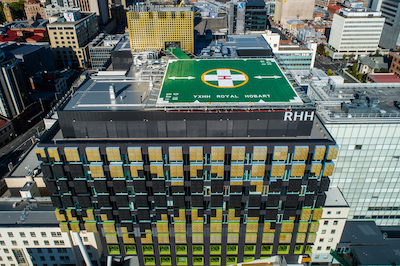
Tasmania pulled off a bit of a stunner this week with the release of its digital health strategy a day or so before the state budget, announcing the first tranche in what is a substantial investment for the state in digital health. $475 million over 10 years is a lot considering Tassie’s small population and its historic underspend on healthcare, and while money has certainly been shovelled into hospital infrastructure over the years – including $689m in Royal Hobart’s K-Block – digital health has never had much of a look in.
There have been some notable digital health initiatives – the country’s first prescription monitoring system, the Tasmanian medicines formulary and controlled drug management system, a statewide health directory, and the first real go at a statewide eReferrals system that is up and running and scoring runs. (A lot of this is with the help and initiative of Hobart software and data specialist HealthCare Software.) All of the state’s GPs use either Best Practice or MedicalDirector, the two pathology providers accept eOrders, and telehealth has been well established in the private sector for over 15 years.

The Tasmanian government has allocated $150 million over four years out of an expected $475 million, 10-year investment in digital health technologies in today’s state budget, proposing to become the first Australian state to deliver a fully integrated healthcare system.
The long-term investment will see the procurement and implementation of a statewide electronic medical record (EMR), an Ambulance Tasmania integrated electronic patient care record (ePCR), and a statewide clinical viewer for hospitals, community care, GPs, specialists and allied health to better access clinical information across care settings.
There will also be a digital front door for patients through a consumer portal that will include scheduling of appointments, personal details and accessing results and medical advice, and a big emphasis on virtual care, following the success of its COVID@home project.

Western Sydney will establish up to 12 urgent care service centres at general practices in the region to improve access to care for non-life threatening urgent conditions.
The centres will be supported by a central intake line (CIL) that can refer the patient to the right care at the right time.

Pharmacy technology vendor Corum Group has signed Sigma Healthcare, the operator of Australia’s largest pharmacy network, to a long-term deal for its wholesale business to continue to use Corum’s PharmX platform.
PharmX is an e-invoicing system that provides an electronic gateway for pharmacies and suppliers to exchange orders and invoices.

New Zealand’s Pharmac has released an online tool to help clinicians identify who is eligible for subsidised COVID-19 antiviral treatments.
Three antivirals are now available to New Zealanders with a streamlined and widened access criteria announced recently.

Newly developed inflammatory bowel disease (IBD) tools have been added to the medCompanion app developed by Melbourne gastroenterologist John Nik Ding to improve bowel preparation before colonoscopies.
Associate Professor Ding developed the app to dispense information on bowel prep to patients in an accessible format.

The recently funded SuperbugAi Flagship project is developing a hospital tracking and response system to detect superbugs, combining data held in electronic medical records, the genetic fingerprints of superbugs, and hospital management systems to track patient movement.
Funding of $3.4 million through the Medical Research Future Fund was secured late last year, with the aim of rapidly alerting clinical staff that a superbug infection is spreading.
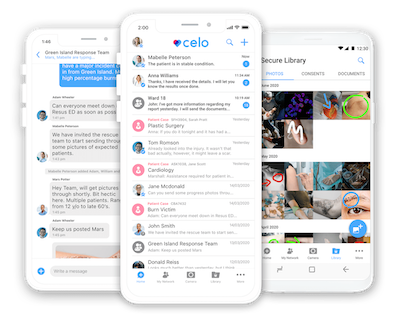
NZ-headquartered healthcare messaging app vendor Celo has joined forces with fellow Kiwi firm Core Schedule to offer a combined solution for healthcare organisations.
The partnership combines Core Schedule’s rostering solution with Celo’s app to streamline rostering and communication.

Six Australian software and hardware vendors have got together to pitch a consortium of solutions to the aged care industry, promising to provide a “unique and powerful” package to help solve some of the challenges in aged care.
Led by medication management and aged care pharmacy solution vendor Webstercare, the partnership also includes shared care record vendor Extensia (now owned by Hills Health Solutions), healthcare communications platform Foxo, telehealth provider Visionflex, electronic referral solution vendor MEDRefer, and point-of-care management, decision-support and clinical workflow platform Humanetix.

International GP survey shows benefits and challenges of remote care, Greenland hospital systems downed by cyberattack, the rise of telehospitalists during COVID, trusted research environments to mitigate risks, Google facing class-action over DeepMind, US patient credential and matching ecosystem proposed, Venezuelan cardiologist pinged for developing notorious Thanos ransomware
Global GP survey identifies promises and pitfalls of virtual care
Imperial College London ~ Justine Alford ~ 16/05/2022
A major international survey of GPs has identified the benefits and challenges of caring for patients remotely.
Copyright © 2025 Pulse IT Communications Pty Ltd. No content published on this website can be reproduced by any person for any reason without the prior written permission of the publisher. If your organisation is featured in a Pulse+IT article you can purchase the permission to reproduce the article here.
Website Design by Get Leads AU.